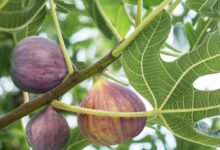
Fig Tree Care: Tips for Thriving Figs in Your Garden
Growing fig trees in your garden can be incredibly rewarding, as they produce delicious fruits and add beauty to your landscape. However, like all plants, fig trees require proper care to thrive. Whether you’re a novice gardener or an experienced grower, understanding the needs of your fig tree will help ensure a healthy and productive tree. This guide will walk you through essential tips for successful fig tree care.
Table of Contents
1. Choosing the Right Location
The first step in fig tree care is selecting the ideal location for planting. Fig trees thrive in warm, sunny environments with plenty of sunlight. Choose a location that receives at least 6 to 8 hours of direct sunlight each day. The more sun your fig tree gets, the better it will grow and produce fruit.
Fig trees also prefer well-drained soil. Planting in areas with poor drainage can lead to root rot and other issues. If your garden soil is heavy or clay-like, consider amending it with organic matter like compost or planting your fig tree in a raised bed. This will help improve drainage and create a healthier environment for your tree.
Additionally, consider the tree’s mature size when choosing a location. Fig trees can grow quite large, often reaching heights of 15 to 30 feet. Make sure to plant your tree in a spot with enough space for it to grow without interfering with buildings, power lines, or other plants.
2. Watering and Mulching
Proper watering is crucial for a healthy fig tree. Fig trees need regular watering, especially during their first year as they establish their root system. Keep the soil consistently moist but not waterlogged. During the growing season, deep watering once a week is usually sufficient, but this may vary depending on your climate and soil type.
Mulching around the base of the fig tree is a great way to retain moisture and regulate soil temperature. Use organic mulch like straw, wood chips, or compost, applying a 2- to 4-inch layer around the tree, being careful to keep the mulch away from the trunk. Mulching not only conserves moisture but also suppresses weeds and improves soil structure as it breaks down.
Be mindful of the weather, as fig trees are sensitive to both drought and overwatering. Adjust your watering schedule during periods of heavy rainfall or extreme heat to ensure your fig tree remains healthy.
3. Pruning for Health and Productivity
Pruning is an essential part of fig tree care that helps maintain the tree’s shape, encourages healthy growth, and increases fruit production. Fig trees benefit from annual pruning, which is typically done in late winter or early spring before new growth begins.
Start by removing any dead, diseased, or damaged branches. This helps prevent the spread of disease and allows the tree to focus its energy on healthy growth. Next, thin out the interior of the tree to improve air circulation and sunlight penetration. Fig trees with better airflow are less susceptible to fungal diseases and will produce higher-quality fruit.
In addition to health pruning, you can also shape your fig tree to control its size. Prune back the tips of branches to maintain a manageable height and encourage lateral growth, which leads to more fruiting branches. Remember, a well-pruned fig tree is not only healthier but also more productive.
4. Feeding Your Fig Tree
While fig trees are relatively low-maintenance, they do benefit from regular feeding, especially if they are grown in containers or in poor soil. Fig trees typically don’t require heavy fertilization, but providing the right nutrients will support healthy growth and fruit production.
In early spring, apply a balanced fertilizer, such as a 10-10-10, to give your tree a boost as it comes out of dormancy. If your fig tree is growing in poor soil, consider adding organic compost or manure to improve soil fertility and structure. You can also use a slow-release fertilizer to provide nutrients throughout the growing season.
Be careful not to over-fertilize, as this can lead to excessive vegetative growth at the expense of fruit production. Yellowing leaves or stunted growth may indicate a nutrient deficiency, in which case you can supplement with a specific fertilizer based on a soil test. Regular feeding will help your fig tree stay healthy and productive year after year.
5. Protecting Your Fig Tree from Pests and Diseases
Like all plants, fig trees are susceptible to pests and diseases. Common fig tree pests include aphids, spider mites, and scale insects, which can damage leaves and fruit. Regular inspection of your tree will help you catch any pest problems early. If you notice pests, try using insecticidal soap or neem oil to control them.
Fungal diseases, such as fig rust and leaf blight, can also affect fig trees, particularly in humid or wet climates. To prevent fungal issues, ensure good air circulation by pruning and spacing your trees properly. If you do notice signs of disease, remove and destroy affected leaves and consider using a fungicide if necessary.
In addition to pests and diseases, fig trees can be damaged by birds and animals. Birds are particularly fond of ripe figs, so consider using bird netting or scare devices to protect your crop. Squirrels and other animals may also be attracted to the fruit, so keep an eye out and take measures to deter them if needed.
Conclusion
Taking care of your fig tree involves a combination of proper planting, regular maintenance, and vigilance against pests and diseases. By following these tips, you can enjoy a healthy, productive fig tree that provides you with delicious fruit for years to come. Whether you’re growing figs for the first time or looking to improve your existing tree, these care practices will help your fig tree thrive in your garden.








